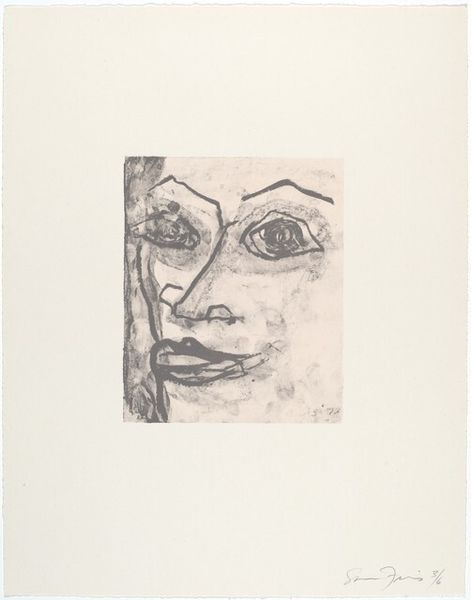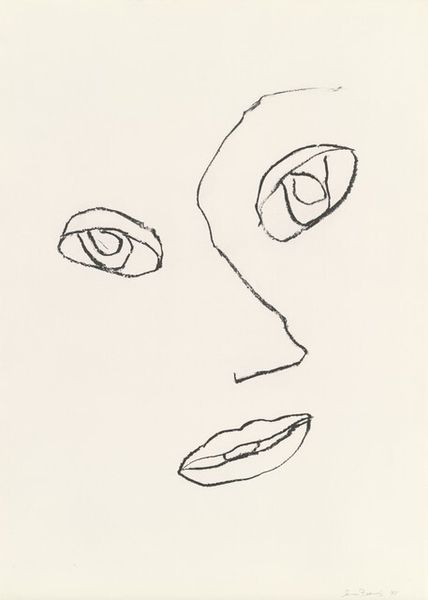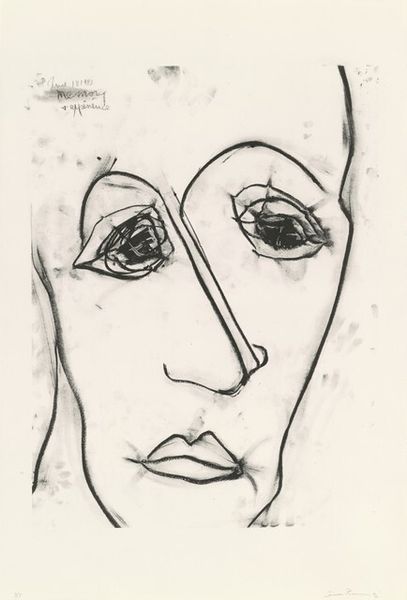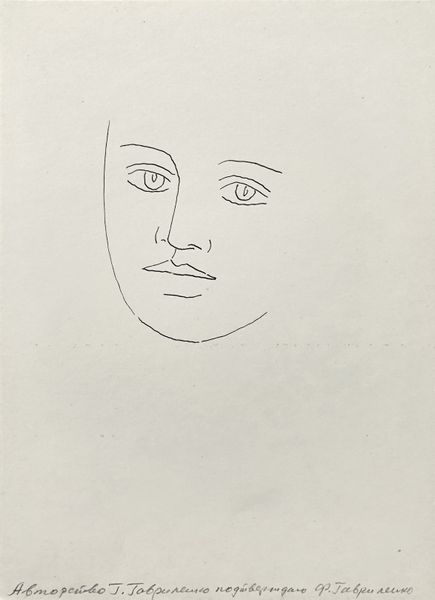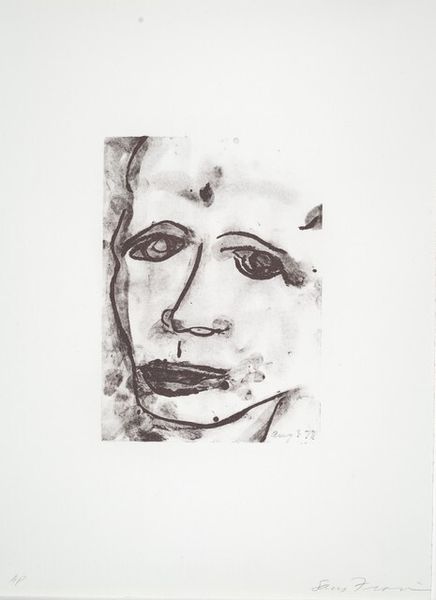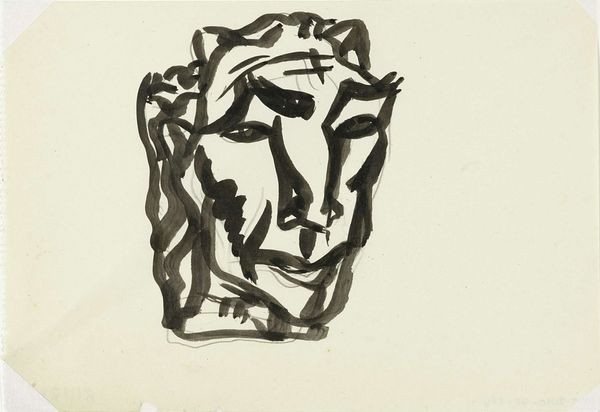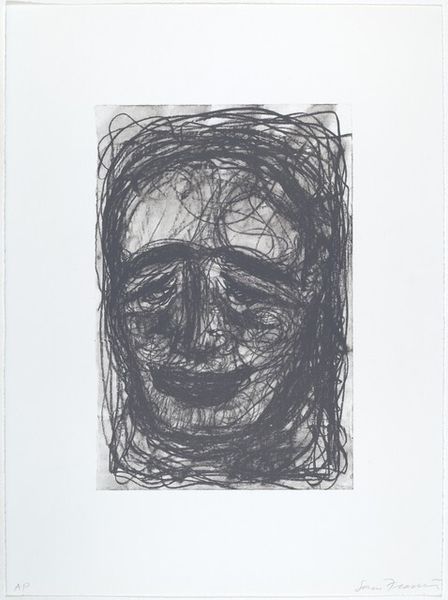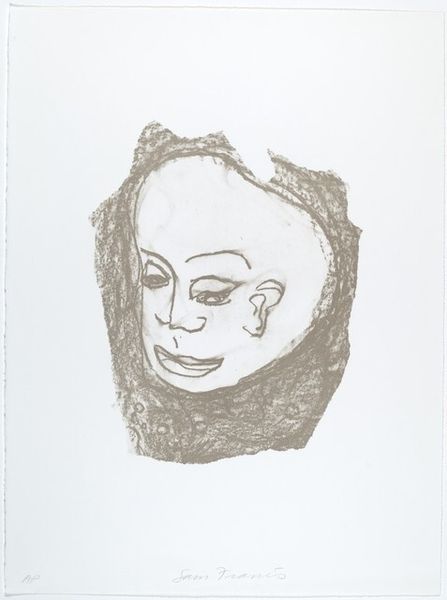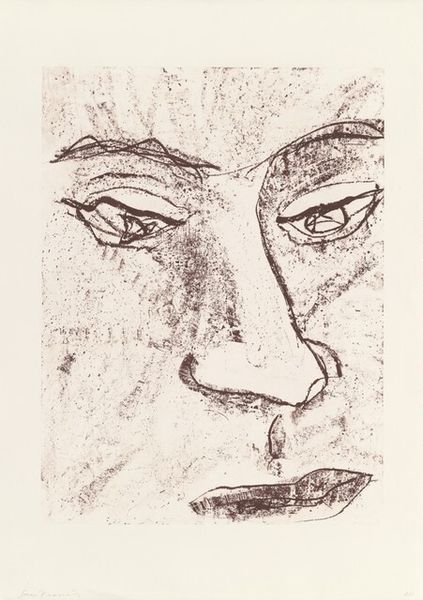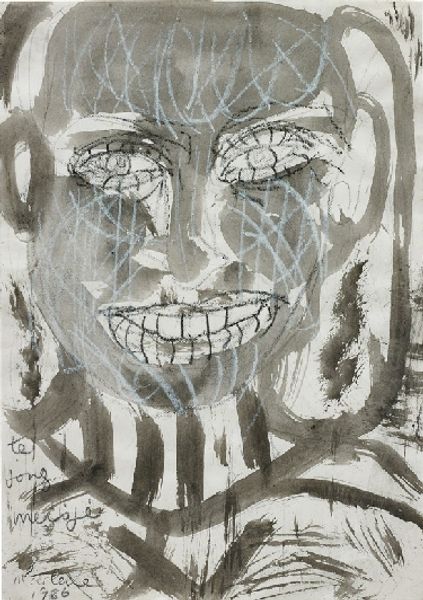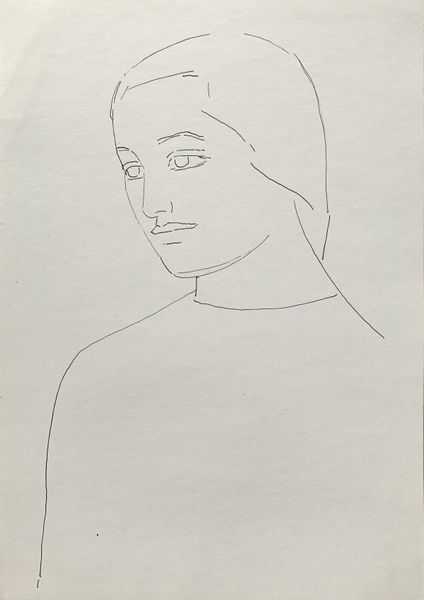
Dimensions: plate: 29.5 x 21.6 cm (11 5/8 x 8 1/2 in.) sheet: 57.3 x 38.2 cm (22 9/16 x 15 1/16 in.)
Copyright: National Gallery of Art: CC0 1.0
Curator: Here we have Sam Francis's "Self-Portrait" from 1982, an ink on paper print. Editor: My initial reaction is one of fragility. The thin lines, the incompleteness... it feels almost like a ghost of a self. Curator: Precisely. Notice how Francis uses the bare minimum of lines to define the facial features. It is a study in essential form, distilling the portrait down to its most crucial structural elements. Editor: But there's a roughness too. You can almost feel the artist's hand, the pressure and speed of the ink across the paper. The lack of shading adds to the immediacy, making you aware of the simple, almost crude tools. Did he do other works like this? Curator: Yes, this aligns with a broader trend in Francis's work towards gestural abstraction, emphasizing process over realistic representation. The looseness in the linear forms echoes his experiments with Abstract Expressionism, even while depicting figuration. Editor: Considering that, what does this suggest about the art of making art or its process? It's as if he is documenting a fleeting expression. What does the labor that goes into the artwork and its presentation say about that portrait, for the people looking at it? Curator: It implies a conscious deconstruction of the self. A self-portrait, yes, but one stripped of ego, raw and vulnerable. Look how the lines converge around the eyes; a focal point revealing internal struggle perhaps? The ink material allows those raw moments to become very clearly and quickly represented. Editor: It is not quite a performance; one could certainly say it carries evidence of artistic labor, reflecting a specific socio-historical moment, a commentary on the ephemeral nature of identity, wouldn't you say? Curator: Certainly, it operates within that realm. It pushes against traditional portraiture—embracing ambiguity and transience instead of permanence and solid form. Editor: So, from a perspective focusing on the material production, "Self-Portrait" is not only an insight into the artist, but also a window into the creative processes behind the final product. Curator: Indeed. It makes one rethink the essential visual grammar of portraiture itself. What minimum is required for likeness, recognition, and perhaps more profoundly, what does it mean to see ourselves?
Comments
No comments
Be the first to comment and join the conversation on the ultimate creative platform.
